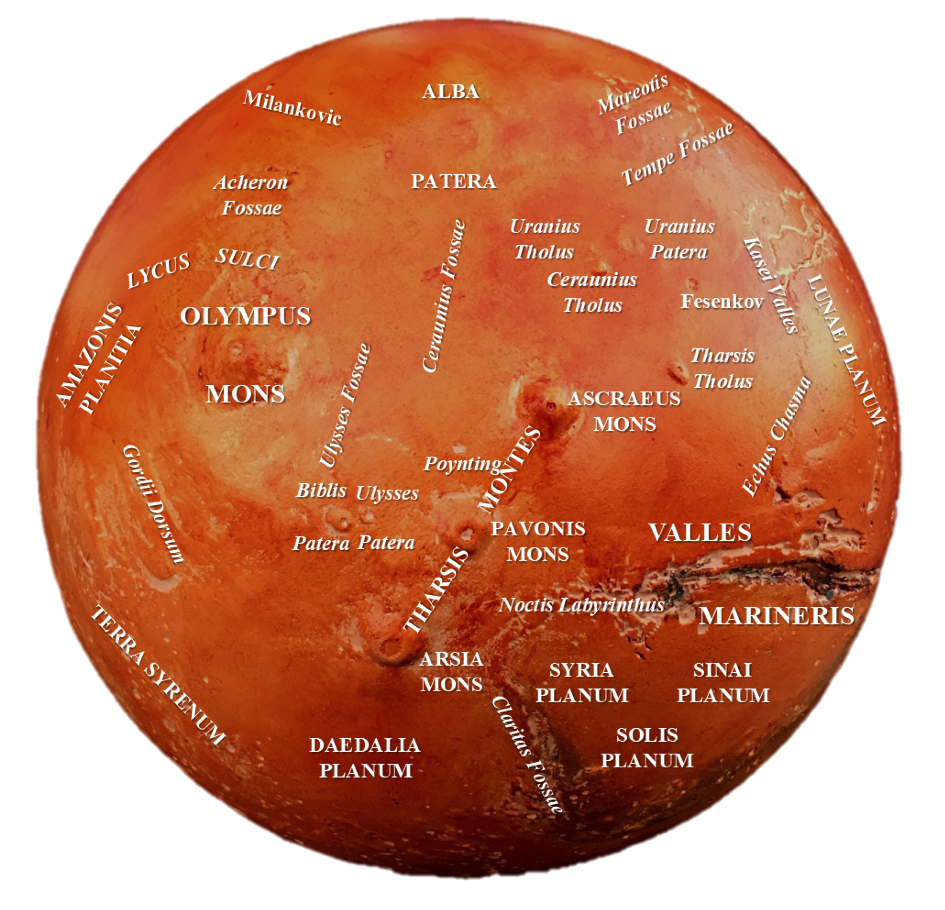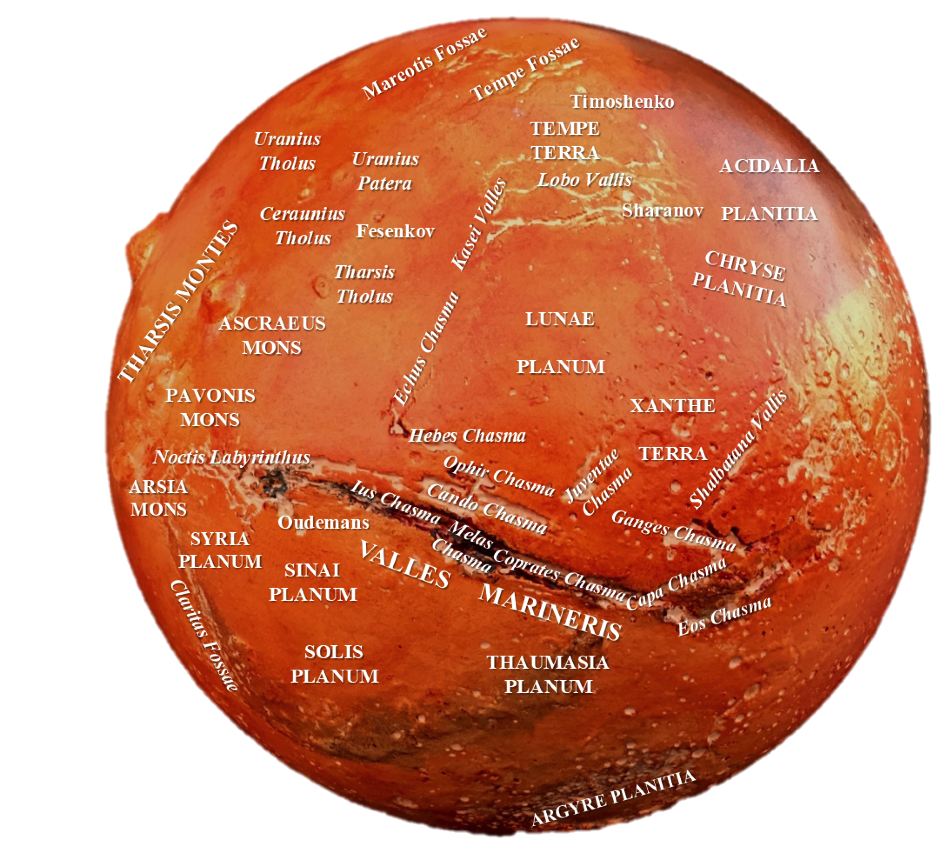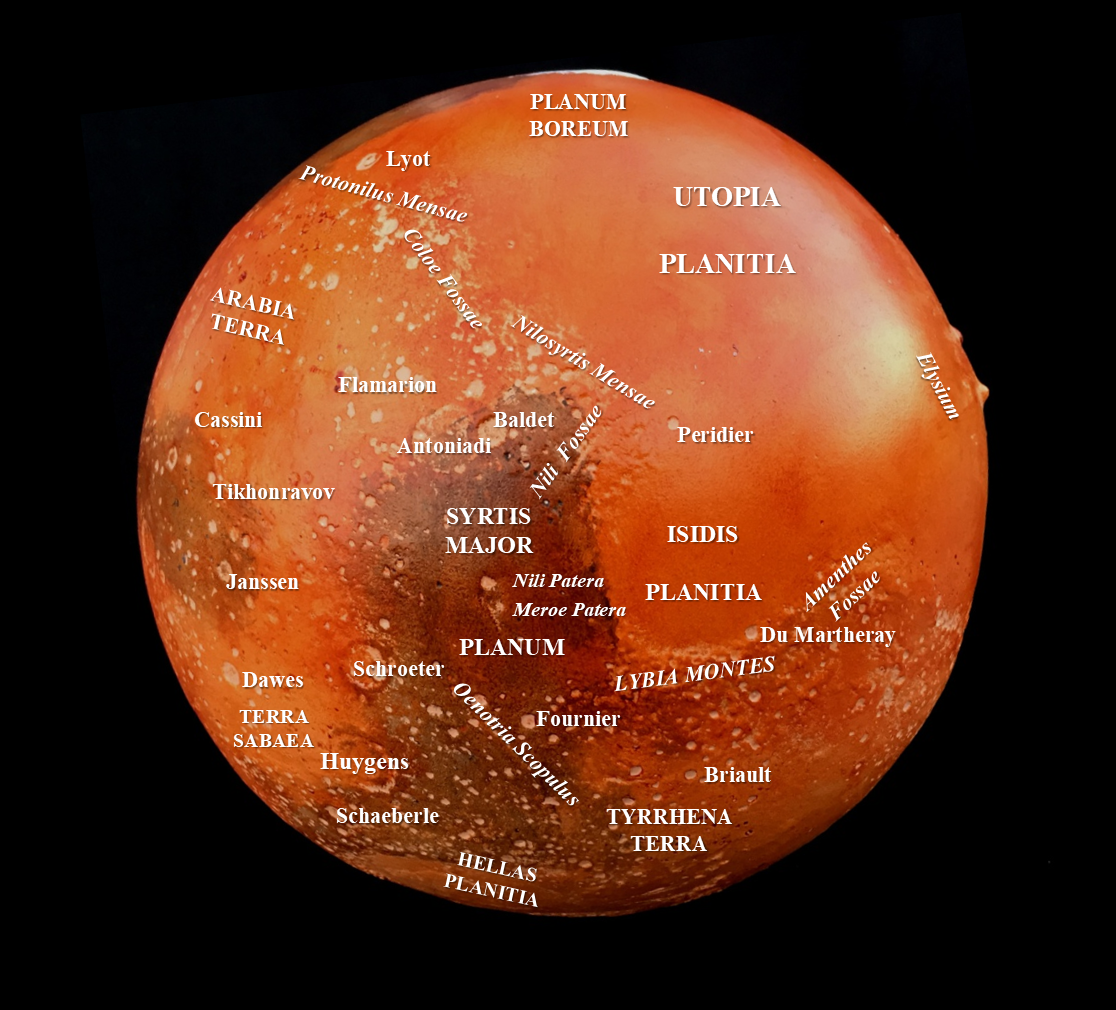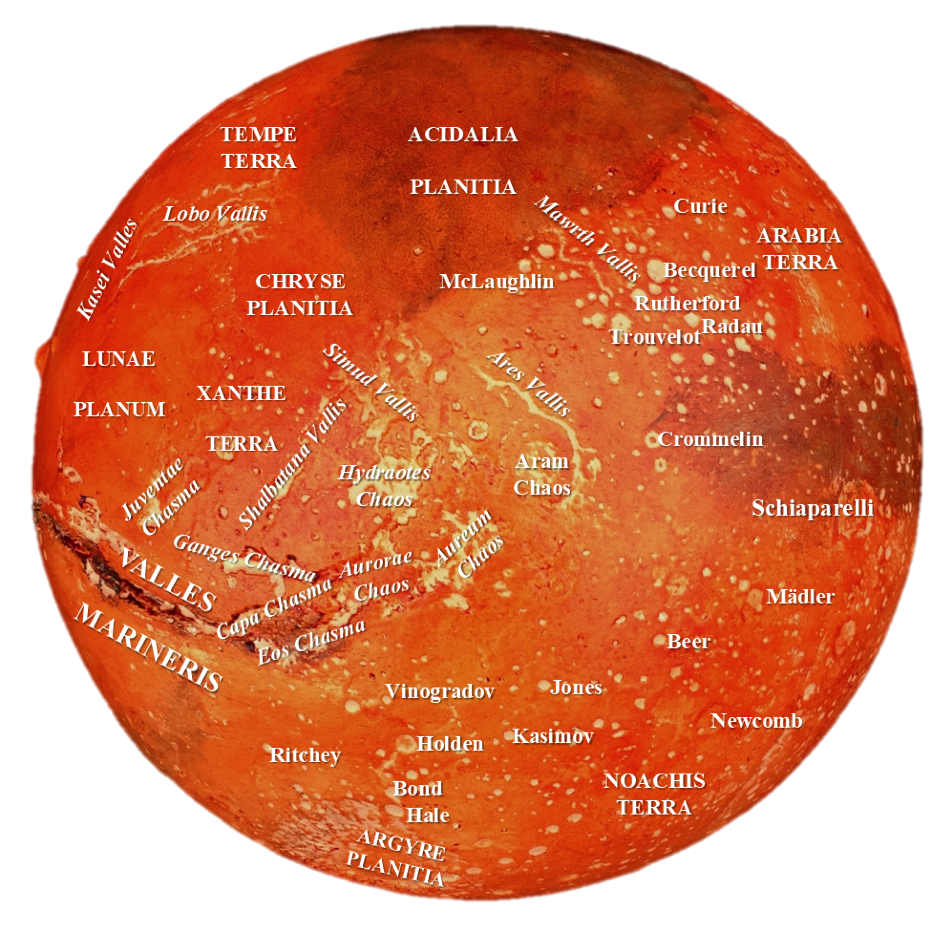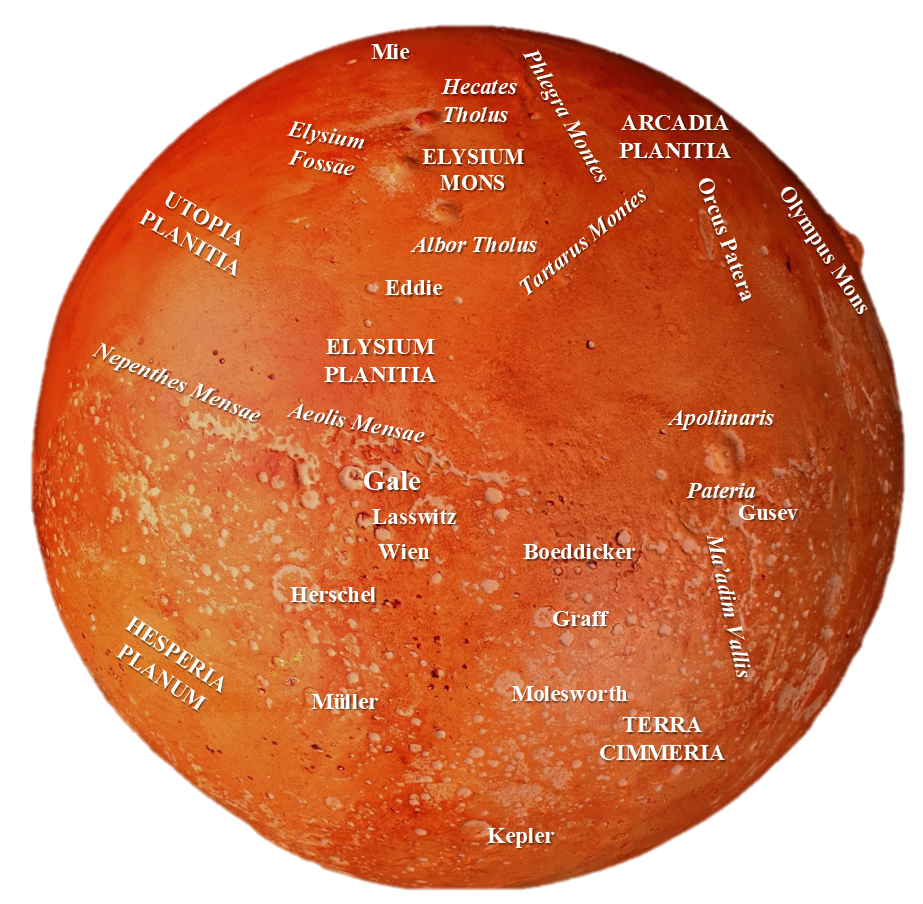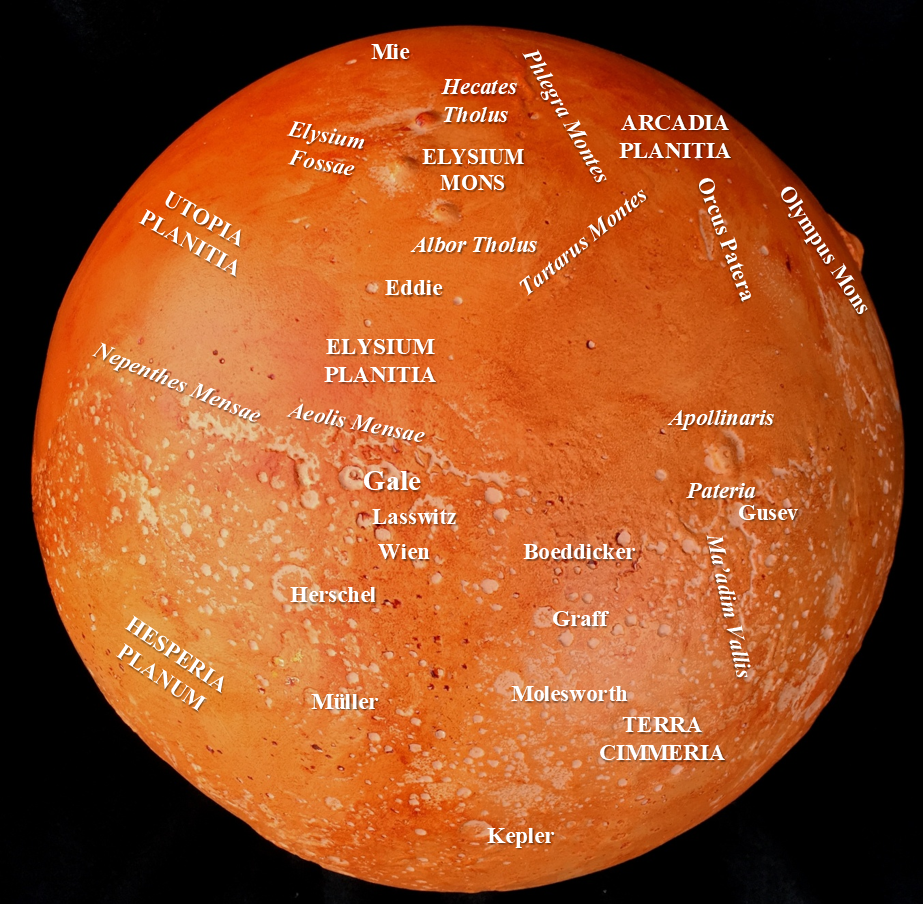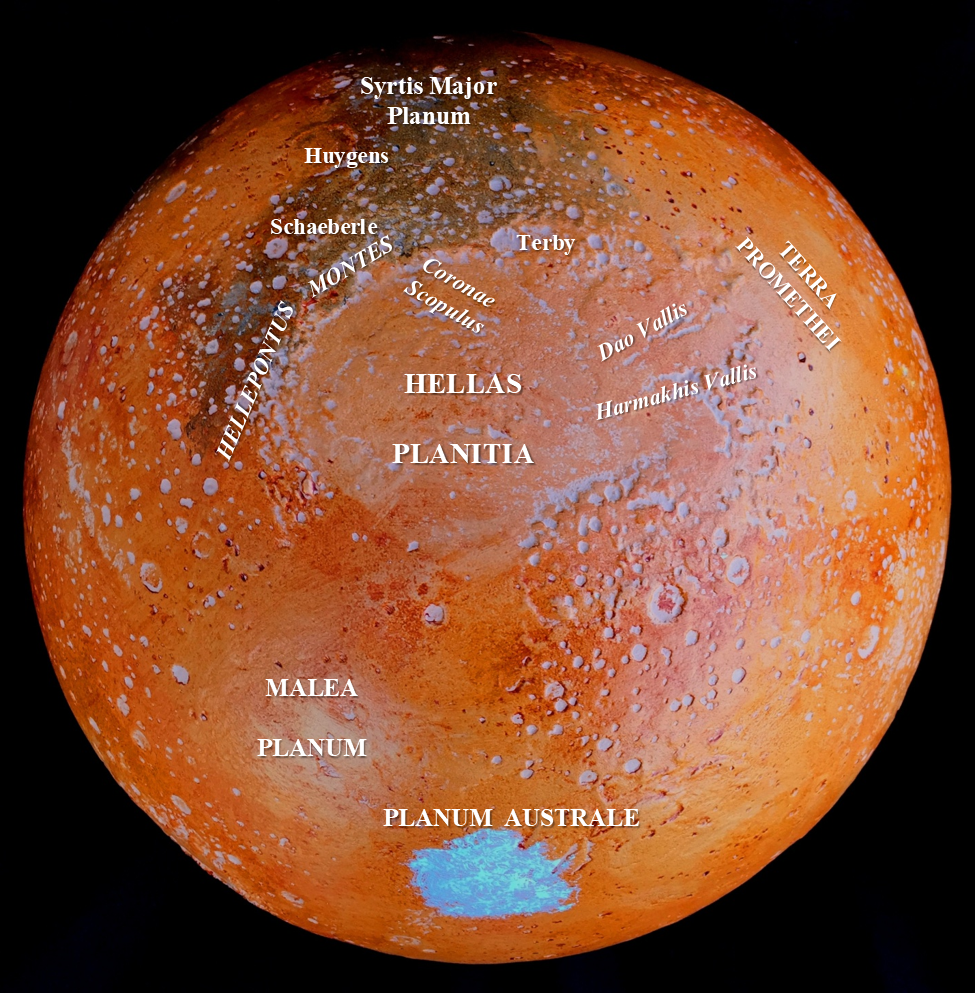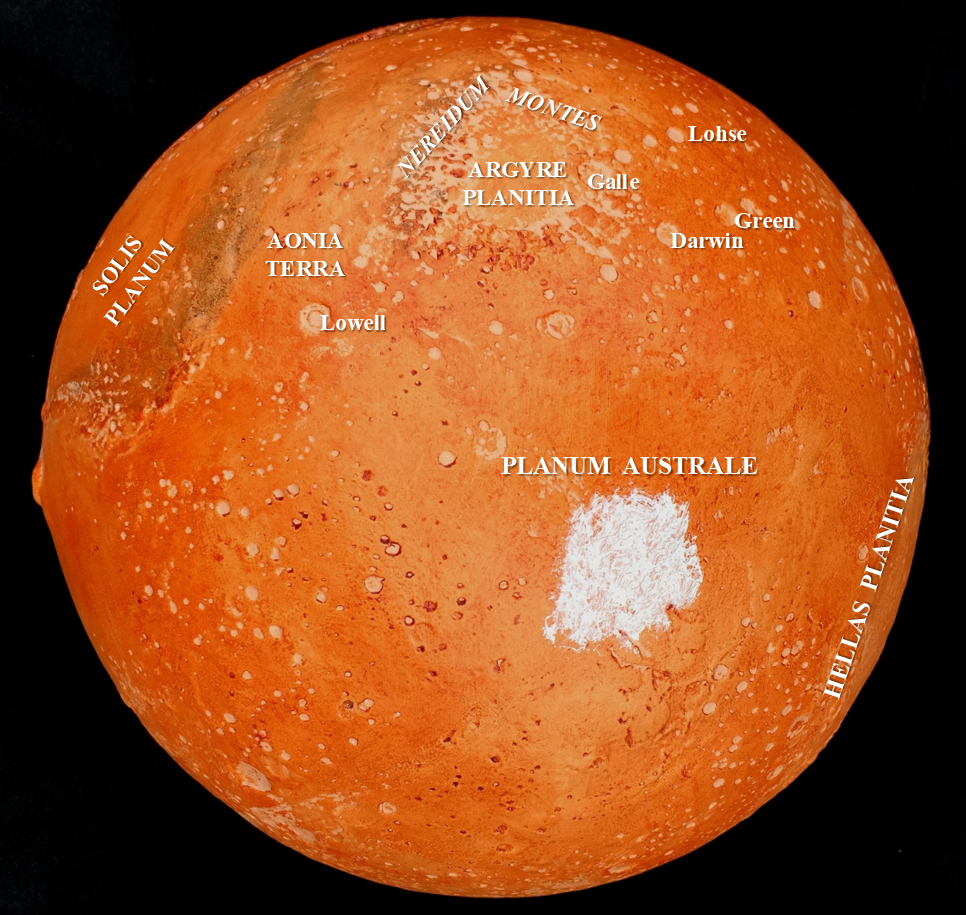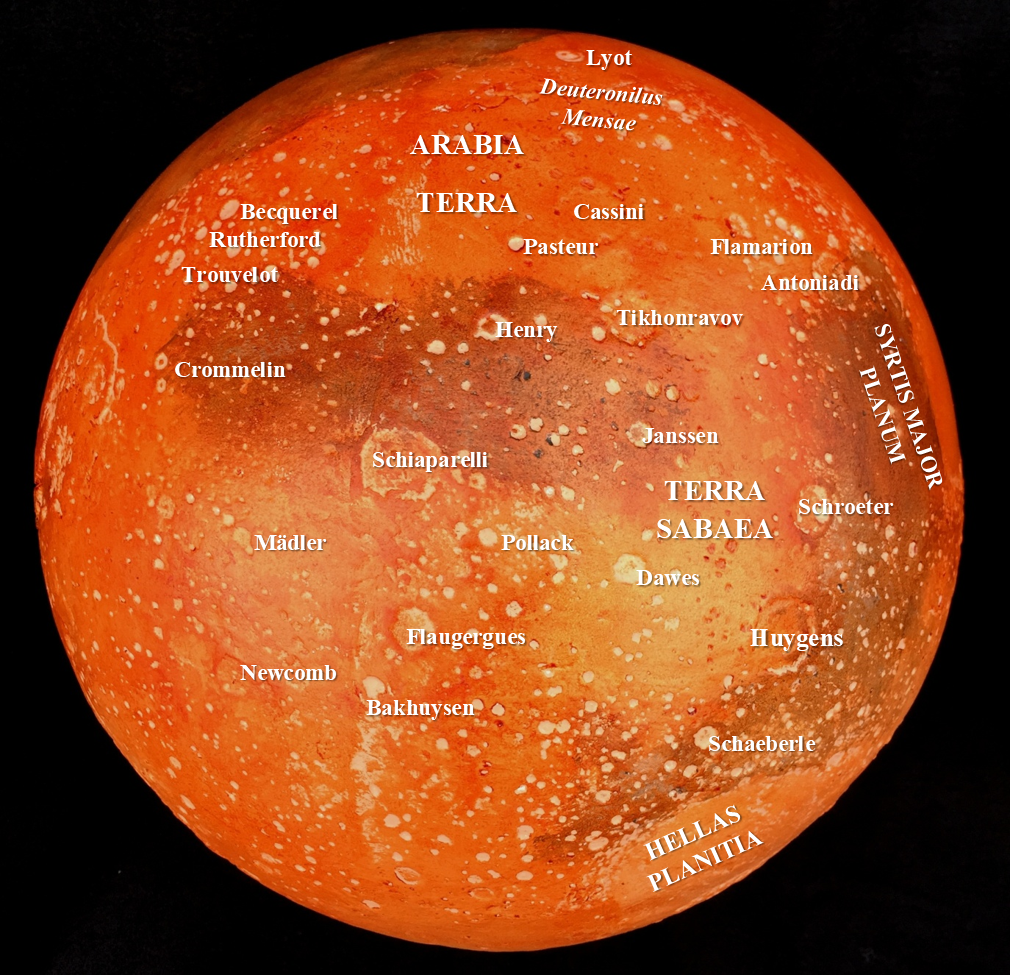MARS FEATURES
Mars is the fourth planet from the Sun and the second-smallest planet in the Solar System, after Mercury. Mars is named after the Roman god of war, and it is often referred to as the "Red Planet" because the iron oxide on its surface gives it a reddish appearance. Mars is a terrestrial planet with a thin atmosphere. The norther hemisphere of Mars is composed of lowlands and volcanoes while the southern hemisphere features highlands and impact craters. Mars has two satellites: Phobos and Deimos.
INTERESTING PLACES TO VISIT ON MARS
Tharsis region
Tharsis is a vast volcanic plateau that dominates the western hemisphere of Mars. The region is home to the largest volcanoes in the Solar System, including the three enormous aligned volcanoes Arsia Mons, Pavonis Mons and Ascraeus Mons, which are collectively known as the Tharsis Montes.
The tallest volcano on the planet, Olympus Mons, is often associated with the Tharsis region but is actually located off the western edge of the plateau.
Further up north features the mountain Alba Mons. Eastward from Tharsis stretches the canyon system Valles Marineris with outflow channels that once carried floodwaters extending to the north.
Olympus Mons
Olympus Mons is an extinct volcano. It is the largest mountain known in our solar system. The volcano has a height of nearly 22 km and a base of 624 km in diameter. Olympus Mons is surrounded by a steep cliff of 6 km in height. The mountain is two and a half times as tall as Mount Everest on Earth.
The top of the volcano is a large caldera of 85 km by 60 km and is 3 km deep in its lowest point.
Olympus Mons has a very small angle of inclination so that climbing its slopes would be quite easy.
Valles Marineris
Valles Marineris (Latin for Mariner Valleys, named after the Mariner 9 Mars orbiter of 1971–72 which discovered it) is a system of canyons that runs along the Martian surface east of the Tharsis region.
It stretches over a length of more than 4000 km, is 200 km wide and up to 7 km deep. Its walls are steep and crossed with gullies.
Valles Marineris is one of the largest canyons of the Solar System.
It was formed due to the rise of the Tharsis region in the early days of Mars, and was further shaped by erosion of running water.
Syrtis Major Planum
Syrtis Major Planum is a dark region in the northern lowlands and is a shield volcano. The dark color is from the basaltic volcanic rock and the relative lack of Martian dust.
Isidis Planitia
Isidis Planitia is located east of Syrtis Major. It is the third largest impact bassin on Mars, after Hellas Planitia and Argyre Planitia. It has a diameter of around 1500 km.
Chryse Planitia
Chryse Planitia is a smooth circular plain in the northern region of Mars, close to the Tharsis region. It is 1600 km in diameter and is average -2.5 km below Mars’ surface. Chryse Planitia shows evidence of water erosion in the past. It has many outflow channels from the southern highlands, Valles Marineris and the flanks of the Tharsis bulge.
Elysium region
Elysium is the second largest volcanic region on Mars, after Tharsis. The region includes the volcanoes (from north to south) Hecates Tholus, Elysium Mons and Albor Tholus.
Elysium Planitia is a broad plain to the south of Elysium. Another large volcano, Apollinaris Mons, lies south of Elysium Planitia and north of Gusev crater but is not part of this region.
Ma'adim Vallis
Ma'adim Vallis is a large canyon on Mars with a length of about 700 km, a width of 20 km and 2 km steep. It is much larger than the Grand Canyon on Earth.
It is formed by current water in the early history of Mars, heading north to the direction of the impact crater Gusev near the equator.
Gale crater
Gale is a crater and a dry lake. It has a diameter of 154 km. Aeolis Mons rises from the middle of the crater.
In 2012, NASA Mars Rover Curiosity landed in Gale, exploring Aeolis Mons and the surrounding area.
Hellas Planitia
The Hellas Bassin was formed by an impact of a huge meteorite with a diameter of more than 100 km a billion years ago. The debris that was formed is big enough to cover completely the United States with a layer of more than 3 km thick.
Hellas Planitia has a diameter of 2300 km and an average depth of around -7 km. The lowest point on Mars is also located here with a depth of -8,18 km.
The difference between Mars' highest (Olympus Mons) and its lowest points is nearly 30 km. In comparison, the difference between Earth's highest and lowest points (Mount Everest and the Mariana Trench) is only 19.7 km. Combined with the planets' different radii, this means Mars is nearly three times "rougher" than Earth
Argyre Planitia
Argyre Planitia was formed by a giant impact about 3.9 billion years ago. It is surrounded by several mountains that form a concentric radial pattern around the bassin.
Polar caps
The planet Mars has two permanent polar ice caps and consist primarily of water ice. During winter, the pole lies in continuous darkness, chilling the surface and causing the deposition of 25–30% of the atmosphere into slabs of CO2 ice (dry ice). When the poles are again exposed to sunlight, the frozen carbon dioxide sublimes, creating enormous winds that sweep off the poles as fast as 400 km/h. These seasonal actions transport large amounts of dust and water vapor, giving rise to frost and large cirrus clouds.
Frozen carbon dioxide accumulates as a layer about one metre thick on the north cap in the northern winter only, while the south cap has a permanent dry ice cover about 8 m thick.
More impact craters on Mars
Mars is covered by countless impact craters. Here are some common known craters:
- Huygens
- Schiaperelli
- Cassini
- Lyot
- Herschel
- Kepler
- Lowell
- Newton
- Copernicus
